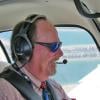
‘A Smaller, Cleaner Place’
Credit: Overair
Santa Ana, California-based Overair says it is “making the world a smaller, cleaner place for everyone” with its five-passenger, 100% electric, 100-mi.-range, tilt-rotor vertical take-off and landing Butterfly. The aircraft will be in the 7,000-lb. weight class and sized to operate from existing helipads with a 50 by-50 ft. touchdown and liftoff area.
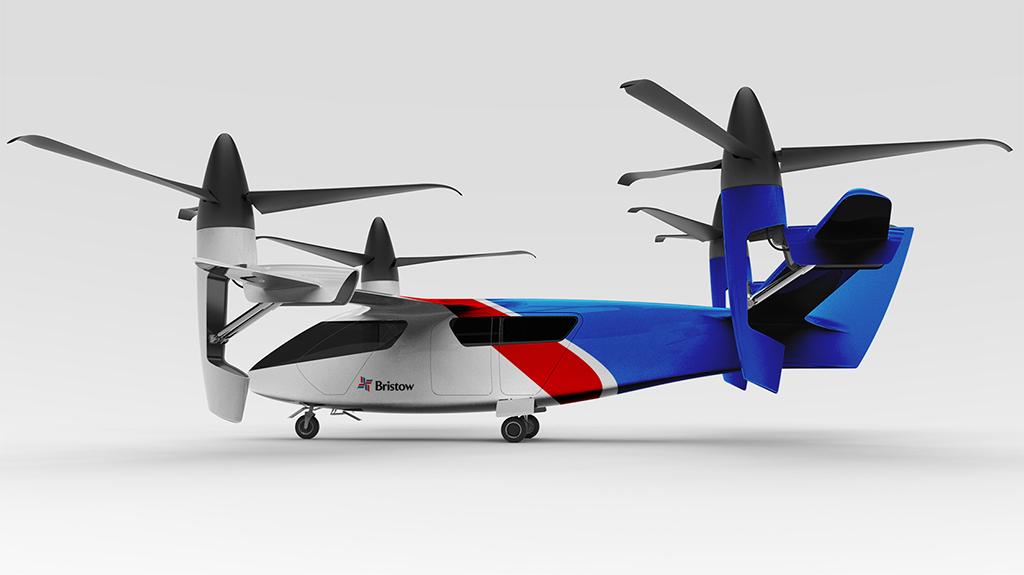
Overair Partners With Bristow For Butterfly
Credit: Overair
Overair’s Butterfly program got a huge boost in December 2021 when the company entered a partnership with Bristow, a vertical lift operator with operations around the world. Bristow plans to buy 20-50 Butterfly aircraft. The company plans to help Overair with the design, performance parameters, certification, flight planning best practices and other areas, it says. The two will also explore commercial taxi flights in new and emerging markets in various high-density geographical locations.
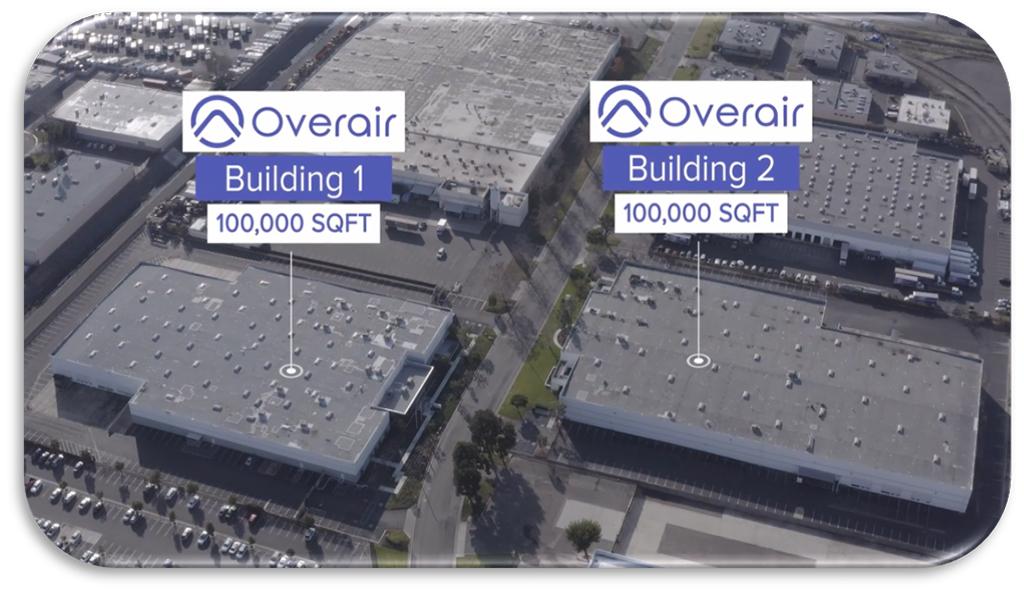
Doubling Space In Orange County
Credit: Overair
Overair plans to expand its operations in Santa Ana, California, effectively doubling its workspace, with a total of more than 200,000 sq. ft. across two facilities. In the next three-to-five years, it plans to hire 1,000 employees, including aerostructure and propulsion systems engineers. Current employment totals more than 100. The company has received $25 million in Series A funding.

Composite Propeller Blade Production
Credit: Overair
Overair claims a unique tooling method to process the composite propeller blades for Butterfly. Here Cody Leuck, Overair senior manufacturing engineer (left), and Lindsay Miller, lead airframe manufacturing engineer, reform a trailing edge mandrel in preparation for the lamination process.
The mandrel is rigid at room temperature, Overair says, allowing for the completion of lamination. It then softens at higher temperatures, allowing the autoclave to do its task of consolidating the carbon fiber materials. Following curing, the mandrels are extracted from the blade while still warm.
Overair says that its specially tooling technique makes the co-curing of the geometrically complicated blade structure possible.

Overair Autoclave For Butterfly Propellers
Credit: Overair
Overair’s existing 4 ft.-by-14 ft.-autoclave is sized for curing Butterfly propeller blades. Larger on-site autoclaves will be used to cure Butterfly’s more sizable airframe components.
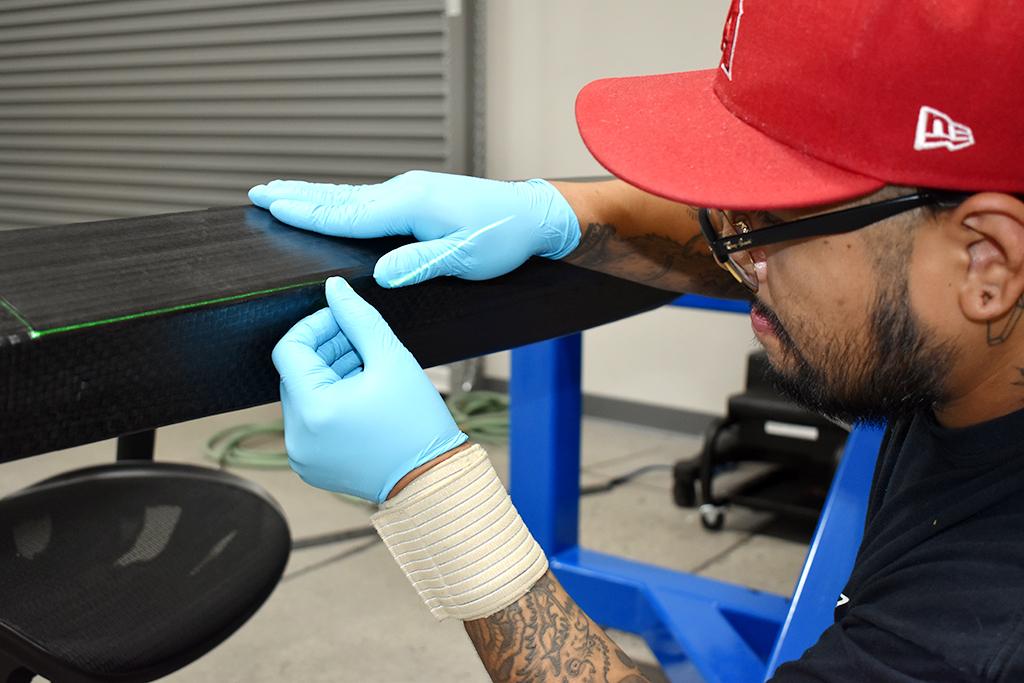
Laser Projection For Repeatable Ply Placement
Credit: Overair
Overair employs laser projection technology to support repeatable composite parts manufacturing. A 3D virtual laser template is projected onto molds, showing the operator precisely where to place the next material ply. Here, Overair technician Manny Jimenez laminates the center spar of a carbon fiber propeller blade.
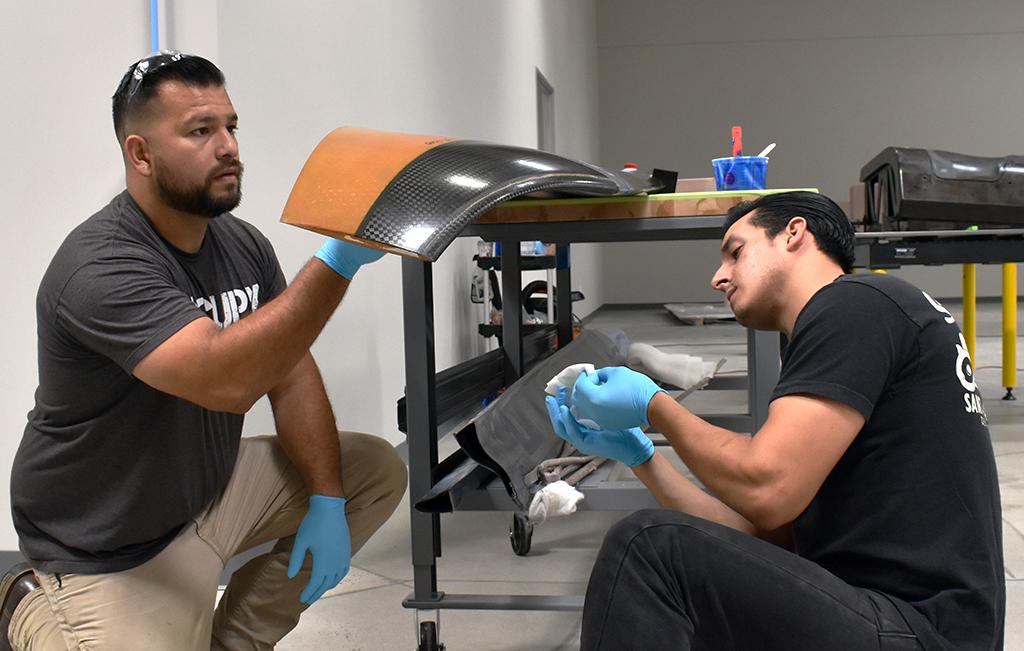
Butterfly Blade Final Assembly
Credit: Overair
Final assembly for Butterfly prototype propeller blades. The main blades are a single piece and co-cured for stiffness and strength. Replaceable blade tips are manufactured separately and bonded in place. Overair technicians Danny Silva and Andrew Iniguez are seen here using a precision placement fixture.

Butterfly Propeller Testing
Credit: Overair
Overair says it uses a “building block” approach to physical structure testing. This results in simpler and less expensive testing earlier in the program to prepare for the larger, more complicated tests that follow. Here, a composite propeller blade is being statically tested to measure mass, stiffness and minimum strength and compared to engineering team prediction models. The company will then confirm that the blade meets design requirements and will function as intended before it is integrated into a propeller hub.

Prop Testing In The Desert
Credit: Overair
Overair tests Butterfly’s propulsion system, which features 20-ft. diameter propellers, each with a trio of individually controlled blades, on a 50,000-lb. testbed truck. Trials are underway in the Southern California desert, “an environment that simulates some of the most demanding aerodynamic conditions anticipated in real-world operations.” There the blades and hub components are subjected to forces they will experience during flight operations.

The Overair Butterfly Machine Shop
Credit: Overair
Overair has its own Computer Numerical Control machine shop for quick-turn prototyping and the precision aerospace quality needed for development, it says.

A Decade Of Experience In Vertical Lift
Credit: Rich Piellisch
Program manager Jim Orbon notched more than a decade of experience at Sikorsky before joining Overair and taking over as Butterfly’s program leader in August 2020. Here, Orbon is representing Overair at the National Business Aviation Association’s NBAA-BACE in Las Vegas in 2021.
Southern California’s Overair is developing Butterfly, a 100% electric Advanced Air Mobility aircraft aimed primarily at commercial air taxi operations. The five-passenger AAM craft is to make its first flight in 2023 with FAA certification planned for 2025 and entry-into-service in 2026.
